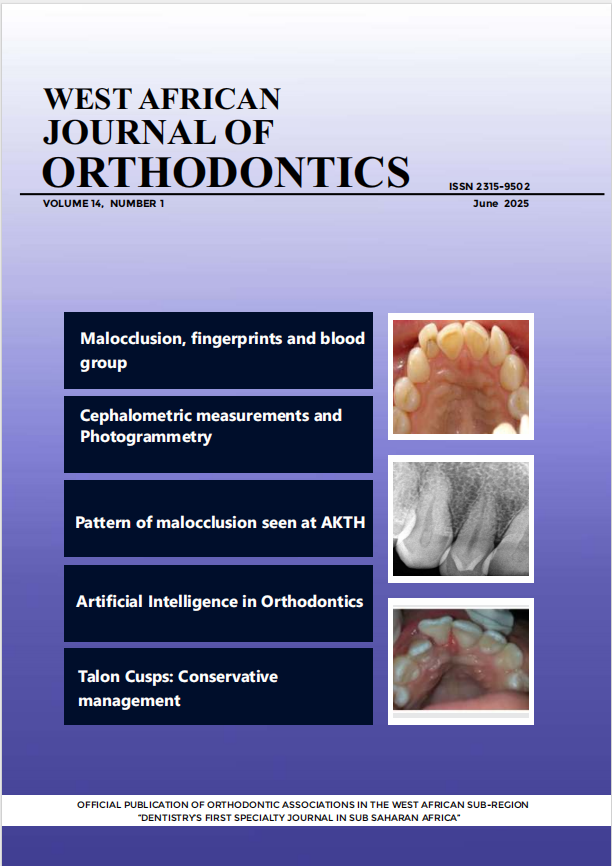Pattern of Malocclusion seen at Aminu Kano Teaching Hospital, Kano Nigeria: A 5 Year Review
Abstract
Background: Malocclusion involves irregular tooth alignment or occlusion beyond normal limits, influenced by genetic, environmental, and ethnic factors. It is a multifactorial condition without a single cause. Understanding malocclusion patterns across populations is essential for orthodontic treatment planning, especially as demand for corrective care continues to rise globally.
Methods: This retrospective cross-sectional study analysed data from 106 orthodontic patients aged 8 to 40 years seen at Aminu Kano Teaching Hospital (AKTH) from 2019 to 2024. All patients who presented at the Orthodontic clinic of AKTH were included in the study sample. Angles malocclusion types, overjet, overbite, crowding, diastema, and oral habits were assessed. Data was cleaned and processed in MS Excel and all statistical analysis was performed using the Statistical Package for Social Sciences (SPSS) version 20, SPSS Inc., Chicago, IL, USA. (SPSS).
Results: The 5-year study at Aminu Kano Teaching Hospital included (106) patients, predominantly female (65.7%), with an average age of 14.5 years. Most patients (40%) were aged 11-15 years. A large proportion of the subjects (64.4%) had Class I malocclusion, with low diastema prevalence (89.5% at 0-1 mm). Increased overjet affected 51.4% and 50.5% were affected by increased overbite. This shows that a small majority had increased overjet (51.4%) and increased overbite (50.5%), a few 16.2% had crossbite, and 7.6% anterior open bite, while a majority of the subjects 69.2% had tooth rotations. Malocclusion distribution showed no gender differences but varied by age. Class I malocclusion was highest in age groups <10 and >25 years, while anterior open bite was more prevalent in older age groups. Significant associations were found with overbite and anterior open bite. Approximately 31.4% of patients exhibited oral habits, with nail biting being most common. No significant gender differences were observed in the prevalence of oral habits. Oral habits were not significantly associated with malocclusion types except for anterior open bite, where 87.5% of affected patients exhibited habits. Consider the only significant relationship between oral habits and malocclusion type was observed between anterior open bite (AOB) where 87.5% of subjects who had AOB gave a positive history of oral habits.
Conclusion: This study highlights the prevalence of malocclusion, different malocclusion types, low diastema rates, and significant occurrences of increased overjet, overbite, and tooth rotations, emphasising the need for regional assessments to address the dental needs of the population.




